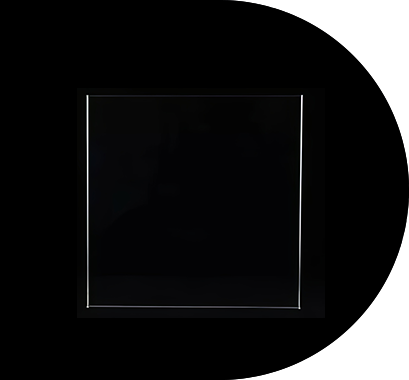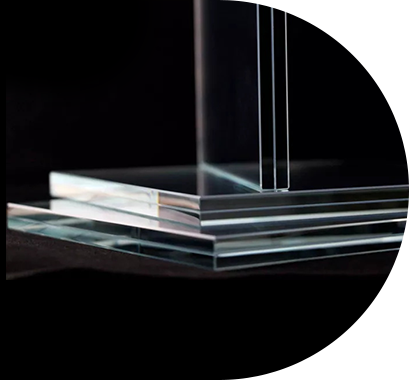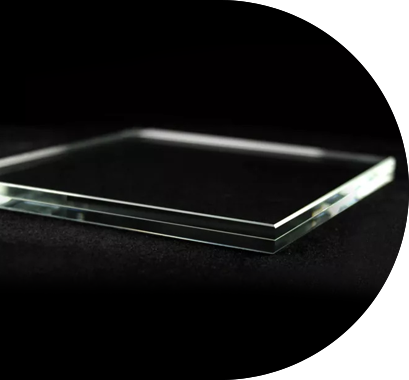Museum display cases require glass that not only provides clear visibility but also offers protection, safety, and long-term preservation. Depending on the specific application and artifact sensitivity, different types of glass are used. Below is a detailed overview of the most common types:
1. Low-Iron Glass
Description:
Low-iron glass contains significantly less iron than regular glass, which eliminates the green tint and enhances clarity.
Main Features:
High transparency and true color representation
No green edges or visual distortion
Suitable for applying anti-reflective coatings
Applications:
Used in high-end display cases where clarity and accurate viewing are essential, such as for paintings, manuscripts, and detailed artifacts.
2. Laminated Glass
Description:
Laminated glass consists of two or more layers of glass bonded with an interlayer (typically PVB or EVA). It remains intact even when broken.
Main Features:
Strong impact resistance and safety
Can integrate UV protection layers
Reduces vibrations and noise
Applications:
Ideal for protecting high-value or fragile items in permanent exhibitions or high-traffic areas.
3. Anti-Reflective (AR) Glass
Description:
AR glass is specially coated to reduce surface reflections, allowing visitors to view exhibits without glare.
Main Features:
Minimizes reflection under lighting
Enhances visibility from multiple angles
Often paired with low-iron and laminated glass for optimal performance
Applications:
Common in gallery settings, framed displays, and well-lit environments where clear visibility is critical.
4. UV-Filtering Glass
Description:
UV-filtering glass is designed to block harmful ultraviolet rays that cause fading or degradation of sensitive materials.
Main Features:
Typically blocks over 99 percent of UV rays
Can be laminated or coated
Helps preserve paper, fabric, pigment, and organic materials
Applications:
Essential for long-term preservation of artifacts such as historical documents, artworks, and textiles.
5. Tempered Glass
Description:
Tempered glass is heat-treated to enhance strength. If broken, it fractures into small blunt pieces to reduce injury.
Main Features:
Stronger than regular glass
Offers basic safety and durability
Scratch-resistant surface
Applications:
Suitable for temporary exhibits or displays where budget is limited and basic protection is sufficient. It does not offer UV protection or the clarity of low-iron options.
6. Smart Glass (Optional Use)
Description:
Smart glass can change from transparent to opaque using electricity. Some types integrate digital functions like interactive touchscreens.
Main Features:
Provides dynamic control over visibility
Enables privacy and display automation
Compatible with advanced exhibit technology
Applications:
Used in interactive displays, rotating exhibits, or modern museum spaces where digital integration is part of the experience.
Comparison Overview
| Type of Glass | Clarity | UV Protection | Safety Level | Reflection Control | Common Use Cases |
| Low-Iron Glass | Very High | Optional | Moderate | Good | Art, manuscripts, detail displays |
| Laminated Glass | High | Yes (if added) | Very High | Good | Long-term and security displays |
| Anti-Reflective Glass | Very High | Yes (with laminate) | High | Excellent | Galleries, lighting-intensive exhibits |
| UV-Filtering Glass | Moderate | Yes | High | Moderate | Archival materials, photos, textiles |
| Tempered Glass | Basic | No | High | Basic | General-purpose, budget applications |
| Smart Glass | Varies | Varies | Varies | Good | Digital or tech-enabled displays |
Summary
Each type of glass offers different advantages. Low-iron glass is ideal when visual clarity is a priority. Laminated and UV-filtering glass provide necessary protection for delicate objects. Anti-reflective coatings improve visibility under strong lighting, and tempered glass is a cost-effective solution for safety. In modern exhibits, smart glass adds functionality and adaptability.






